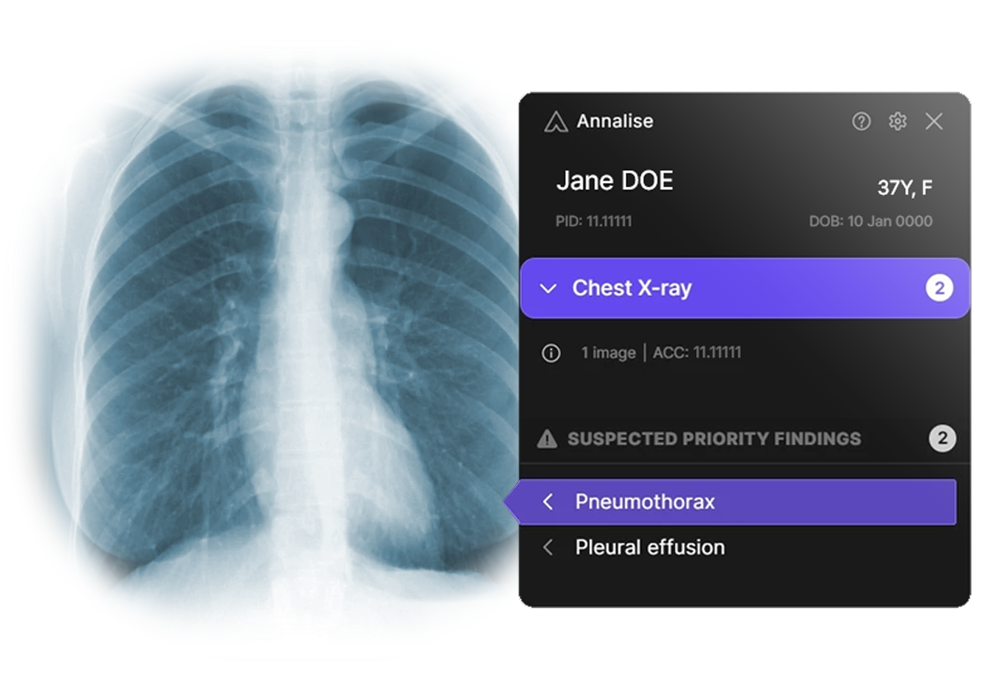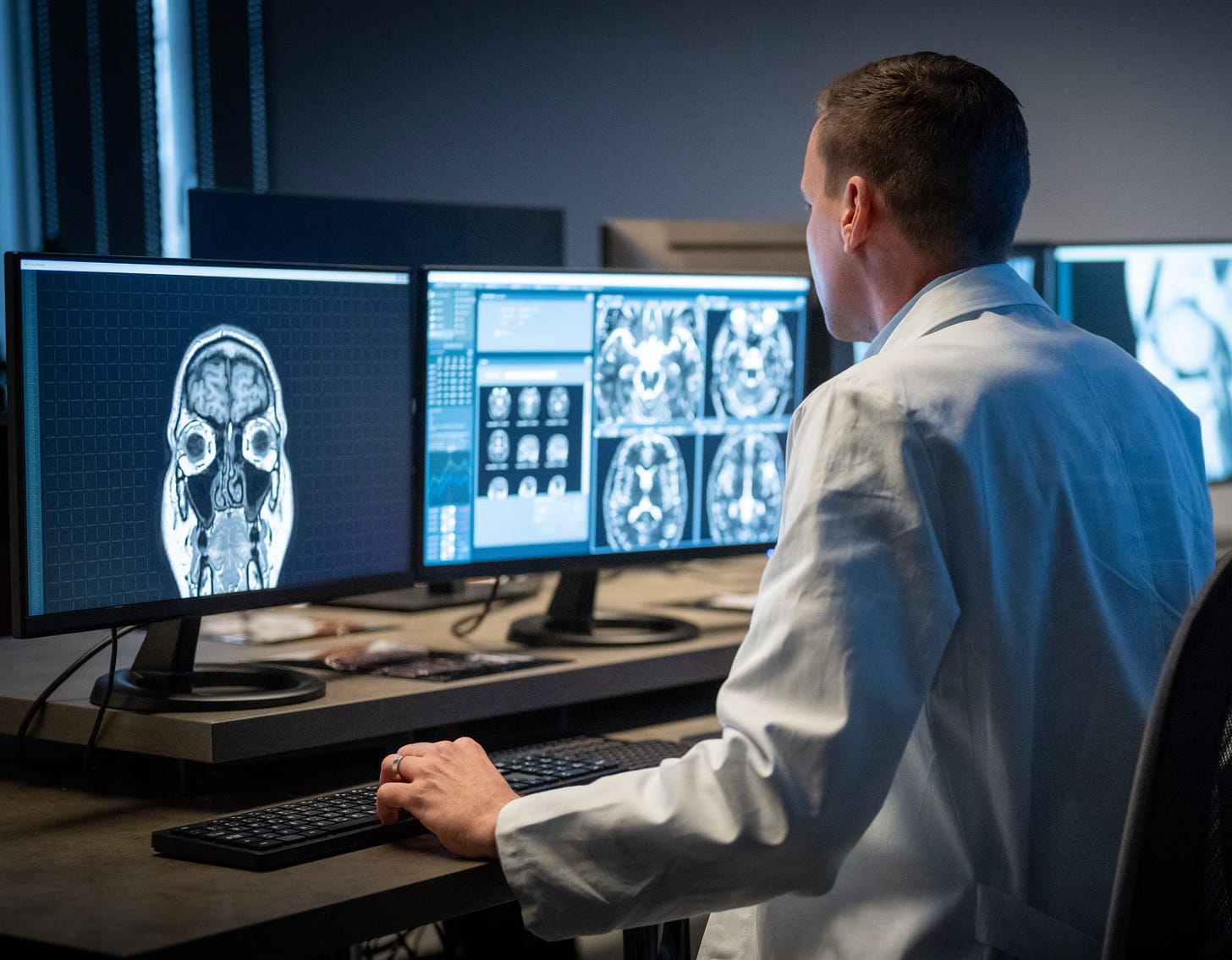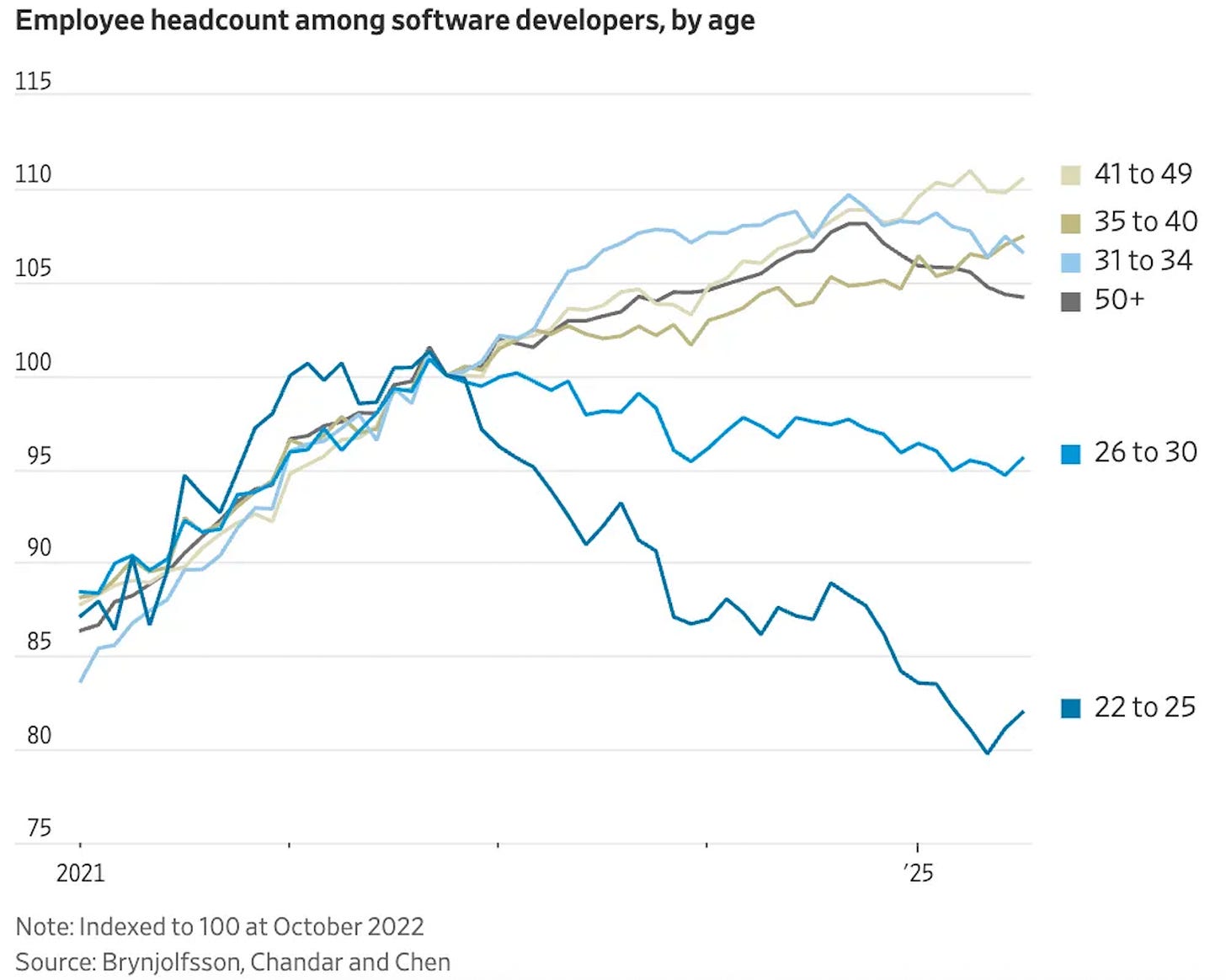Why do radiologists still exist?
AI's first white-collar casualty hasn't fallen yet
This is a setup for an article I have coming out in Works in Progress. Here, I sketch why this is an interesting and useful question; next week’s piece will get into the full answer.
Depending on who you ask, AI is either decimating entry-level jobs or going through an ineffectual hype cycle. A New York Times column profiled Mechanize, a San Francisco start-up whose founders openly say their goal is to “fully automate work” — from coding and research to law and medicine — “as fast as possible”. Axios reported on Anthropic CEO Dario Amodei’s stark warning that AI could wipe out half of all entry-level white-collar jobs within just five years, calling it a potential “white-collar bloodbath”.
Economists are starting to find evidence that this disruption may already be underway. A new paper by Erik Brynjolfsson and co-authors at Stanford, using millions of payroll records, found that employment for young workers aged 22–25 in highly AI-exposed jobs, like software developers and customer service reps, fell by 13% since the launch of ChatGPT, even as older workers in the same roles kept steady or grew. Derek Thompson summarized this research as the strongest evidence yet that AI is already destroying entry-level jobs for young people.
But not everyone sees the same picture. The Economic Innovation Group, analyzing government survey data, argued there is “little evidence of AI’s impact on unemployment” overall, noting that most firms still report no net change in hiring due to AI. Other commentators, like Noah Smith and John Burn-Murdoch, have highlighted that much-discussed drops in graduate hiring don’t present a clear picture, or appear to be reversing. Economist and newly-appointed Dean of Harvard College reassured his students that “this moment, which feels risky, is actually a tremendous opportunity for you” — pulled from his post entitled ‘Shorting the AI jobs apocalypse’.
This back-and-forth captures why the moment feels confusing: AI is clearly advancing in capability, but whether it is actually eliminating jobs at scale remains contested. To cut through the noise, it can help to look at a single case study.
Built for automation
And, if any profession should have given us early clarity, it’s radiology. On paper, it looks almost designed for automation:
The work is digital. Radiologists deal in images, already captured and stored electronically. Unlike engineers inspecting physical samples or judges hearing live testimony, radiologists begin with clean digital inputs, ready for software to process.
There is a strong pattern recognition component. When radiologists look for certain indications, they are thinking about the many other images they have seen throughout their training and recognizing patterns across them, a type of task where AI is relatively strong.
The tasks are repetitive. The job involves scanning for the same set of anomalies over and over — lung nodules, hip fractures, breast tumors. There is variation in each case, of course, but compared with the open-ended problem solving of strategy consulting or the creative drafting of advertising, the work looks very similar day to day.
It’s easy to grade. Did the system flag the pneumonia? Did it miss the hemorrhage? Success can be measured against relatively clear ground truth, something much harder to define in fields like management or education where outcomes are diffuse and long-term.
There’s plenty of data. Hospitals produce millions of scans every year, far more than any individual radiologist could ever look at. Where many professions struggle with data scarcity, radiology is drowning in examples.
The human element is lighter. Radiologists do interact with patients, but less than many other physicians. A core part of the work happens in dark rooms, behind monitors, focused on images rather than on face-to-face conversations. That makes it easier to imagine machines taking over, compared with professions that involve more human interaction.
There’s pressure to go faster and cheaper. Waiting for a radiologist’s report can delay treatment across entire hospital systems. If algorithms could read scans more quickly, hospitals could cut costs, shorten wait times, and treat more patients.
This has fueled widespread speculation that radiologists would be the first automated white collar profession. In 2016, Geoffrey Hinton, a pioneer of deep learning, warned radiologists were “like the coyote already over the cliff but not yet looking down.” Vinod Khosla, in 2017, said “the role of the radiologist will be obsolete in five years.”
Predictions meet reality
And AI radiology models have come as promised. Today, about 1,200 medical AI devices are FDA approved, and over 900 of them are targeted at radiology — more than every other specialty combined. They perform competitively with humans according to benchmarks: in 2019, a neural network performed better than 2 of 4 tested radiologists at identifying abnormalities on head CT scans, and a labeler performed better than three tested radiologists at detecting the presence of three of five pathologies on chest radiographs. A 2022 paper found that “a self-supervised model trained on chest X-ray images that lack explicit annotations performs pathology-classification tasks with accuracies comparable to those of radiologists.”

Yet, nearly a decade after those predictions, radiologists are not just still working; they are busier and better paid than ever. In 2025, American diagnostic radiology programs offered a record 1,451 positions across all radiology specialties, a 5.2 percent increase from 2024, and the field’s vacancy rates are at all-time highs. In 2025 radiology was the second-highest-paid medical specialty in the country, with an average income of $520,000, over 48 percent higher than the average salary in 2015.
So, why has the obsolescence so many predicted failed to manifest? This is an interesting question in and of itself, but it is also a useful case study. Radiology is ahead of other professions in terms of AI automation, and so it offers a preview from which we might extract ideas about how AI automation may play out for the rest of white-collar work, at least in the first ten or so years of capable models.
I dig into the reasons why radiologists still exist, and what we might take from that about the prospects of other industries, in a forthcoming Works in Progress Article — out next week.




I am at Radiologist with a sub specialty in breast imaging. AI is helpful for a second check of images although it is not accurate enough as a standalone model for breast imaging at the moment. AI is helpful in reporting. It generates patient friendly reports off of my dictated report, and in the near future will create an impression out of the findings portion of my dictated report. There are other applications for AI than just an image interpretation. One of the goals is to make us more accurate, but also more efficient.
Excited for the full piece!
It is unclear to me that pharmacists couldn't be replaced with vending machines, and yet they make a mean wage of $136k (https://www.bls.gov/oes/2023/may/oes291051.htm). I have some thoughts on why this is, but look forward to seeing your explanation!